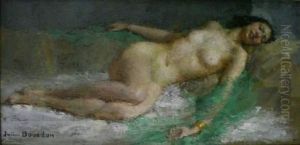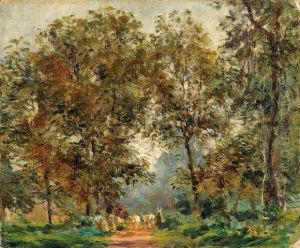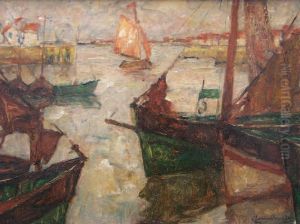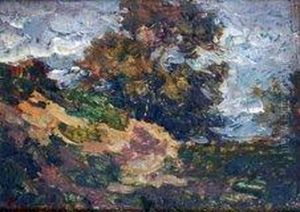Julien Bourdon Paintings
Julien Bourdon, more commonly known as Sébastien Bourdon, was a French painter and engraver whose work is associated with the Baroque movement. He was born in Montpellier on February 2, 1606, to a Protestant family. His father was a painter, which provided Bourdon with an early introduction to the world of art. However, due to religious tensions and the difficulties faced by Protestants in France at the time, his life and career were marked by periods of mobility and uncertainty.
Bourdon's early artistic training is not well documented, but it is known that he traveled to Rome in his youth, where he was influenced by the works of the great masters of the Italian Renaissance and Baroque periods. His style was eclectic, and he was adept at adapting to the various tastes and styles prevalent in the regions where he worked. In Rome, Bourdon's exposure to Caravaggio's dramatic use of chiaroscuro would have a lasting impact on his style.
After spending some time in Rome, Bourdon returned to France and worked in Paris, where he received commissions from prominent patrons. He was particularly skilled in landscapes, history paintings, and portraits. Notably, Bourdon was one of the founders of the Royal Academy of Painting and Sculpture in Paris in 1648, which played a key role in the development of French art in the classical age. His career in France was not without its challenges, though, as the political and religious climate led him to seek work in Sweden for a period, where he became a court painter to Queen Christina.
Bourdon's work is characterized by a combination of classical compositions with a dynamic and somewhat idiosyncratic use of color and light. Among his notable works are 'The Crucifixion of St. Peter,' 'The Finding of Moses,' and 'The Return of the Ark of the Covenant,' which exemplify his ability to blend narrative drama with a strong sense of atmosphere. Despite his Protestant background, he received numerous commissions for religious subjects, which he executed with a sense of grandeur and emotional resonance.
Sébastien Bourdon's later years saw him continuing to work in Paris, where he contributed to the decoration of the Louvre and other royal projects. His legacy includes not only his diverse paintings but also his drawings and engravings, which circulated widely and influenced subsequent generations of artists. Bourdon died in Paris on May 8, 1671, leaving behind a body of work that reflects the turbulent and transformative period in which he lived.



